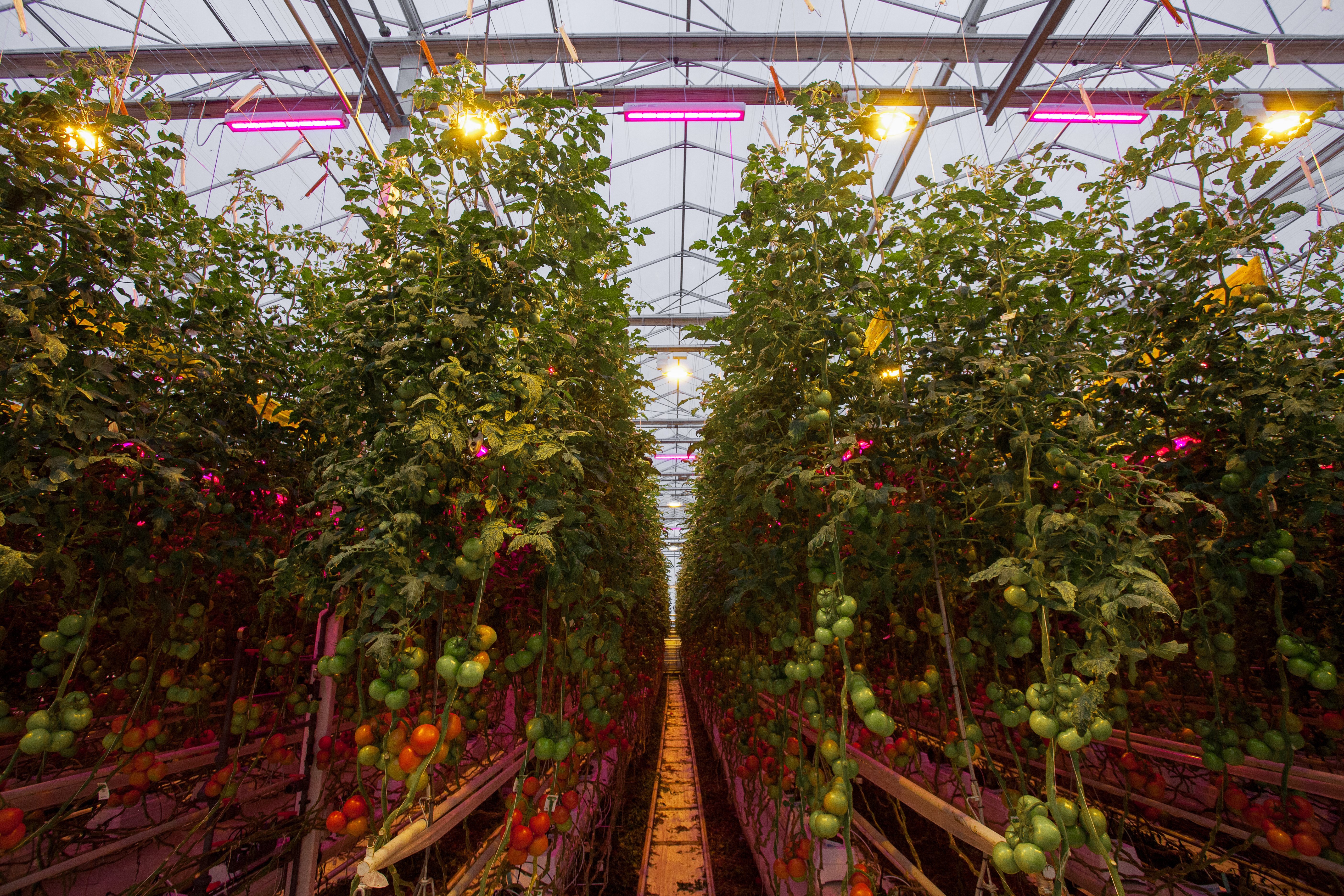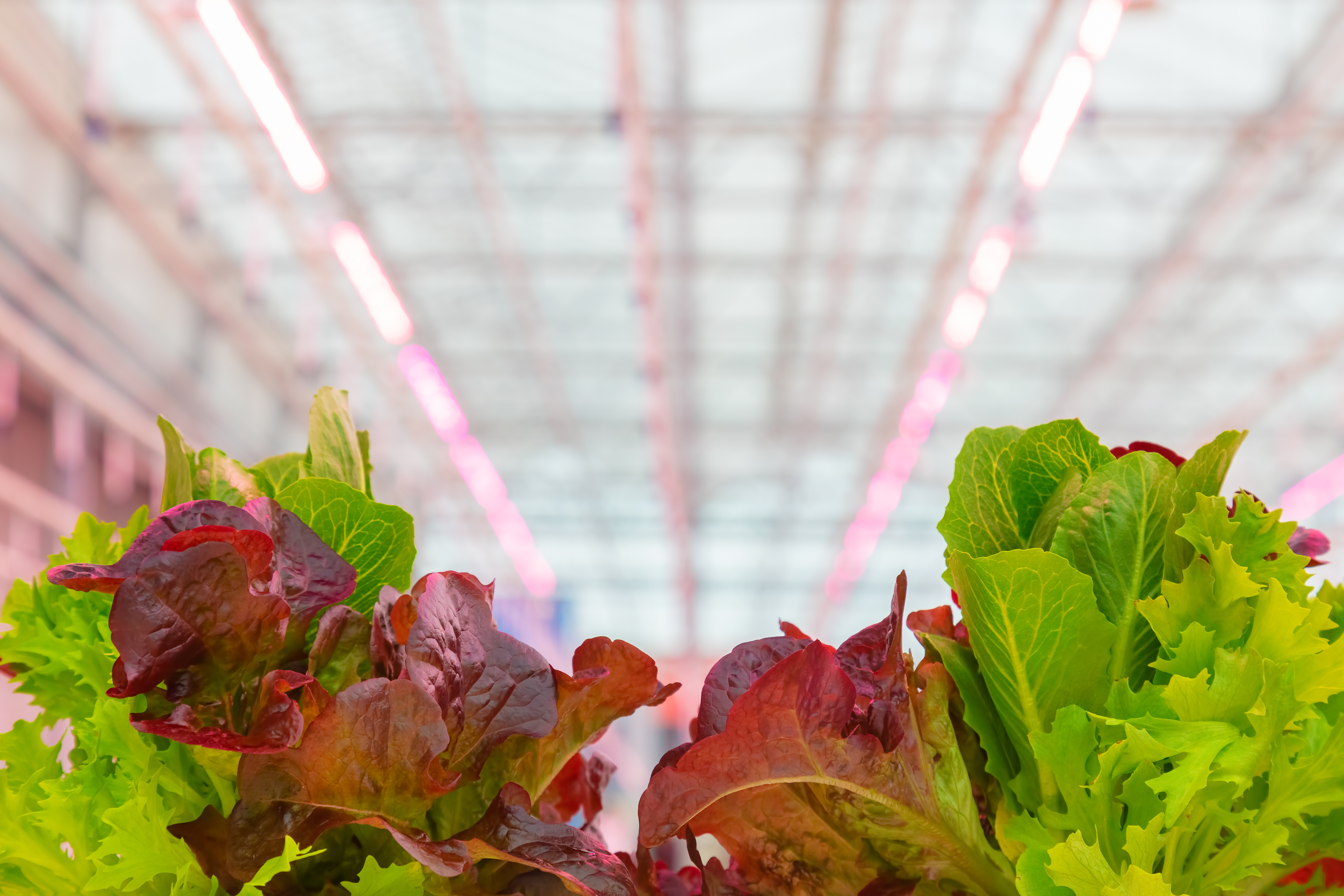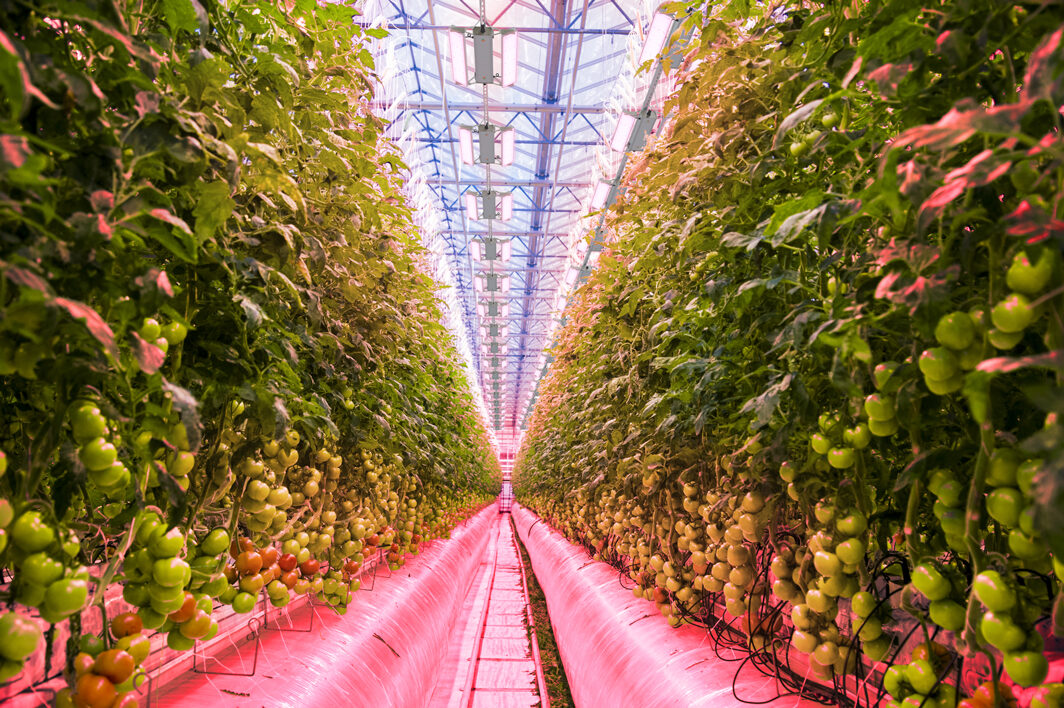Six things to know before buying LED grow lights
With a flood of LED lighting products now on the market, it can be hard to distinguish what makes for a high-quality, dependable horticultural LED system that gets you the results you want. Unfortunately, not all LEDs are created equally, and there are a few things a grower should look for when researching LED luminaire manufacturers. Doing your due diligence before committing to a lighting installation can save you headaches and money in the long run. We have worked with countless growers who have installed cheap, inferior-quality lights that begin failing soon after installation. P.L. Light Systems is a pioneer in horticultural lighting and has been manufacturing lighting systems for 40 years – so, you know we are dependable and our products are built to last. There are many reasons growers want to invest in LED lighting―including increased light and energy efficiency, lower heat loads, improved plant morphology, and dimming and daisy–chaining capabilities. Let’s take a look at the big picture, so you will know what to look for when purchasing LED luminaires and some of the hidden costs that can sometimes be associated with LED installations.
1. Is the Luminaire Certified?
One of the first things you should do is check to ensure the lights you purchase are safety-certified. You should check for CSA or UL certification and, in some cases, DLC listed. All reputable horticultural LED lighting companies will have their products rated by recognized bodies for both safety and energy efficiency.
What is CSA or UL certification? A product with a CSA or UL sticker signifies that it has passed specific safety requirements for use in the intended application. These standards ensure products have been rigorously tested to ensure they don’t pose a safety hazard. If a product is CSA or UL-listed, it is deemed safe for use when installed following electrical code requirements. If a luminaire does not have UL or CSA certification, it would be wise to consider a certified alternate from a reputable manufacturer.
Why is it important to be DLC-listed? DLC stands for DesignLights Consortium. An LED luminaire that has earned certification from them indicates a high level of both quality and energy efficiency. The DLC’s stringent standards allow growers to validate and compare the performance of horticultural luminaires―eliminating the need for thorough vetting and due diligence that you would otherwise be required when considering a lighting system.
In some cases, lighting products need to be DLC listed as a qualification standard for utility companies issuing rebates. You can check if a product has been DLC listed by going to their website and entering the company name or product.

2. Maintenance and Longevity
To maintain the optimal performance and lifetime of the LEDs, a luminaire should be designed to drive the LEDs below their maximum wattage. Unfortunately, many lighting manufacturers are “overdriving” their LEDs to increase the light output―without increasing the cost of the luminaire. The problem with this approach is that by increasing current, you are also raising heat, which accelerates the light degradation and spectral instability of the lights. In many designs, the driver also sees a shortened life as it too is subjected to the increased heat of the LED array.
Ambient temperatures at the top of a greenhouse can be very high and decrease the efficiency and longevity of your luminaire. Be sure to ask questions about the overall thermal design and heat sinking when purchasing an LED system. Some companies use water or fans to cool their LEDs, which on top of being more expensive to operate, can cause problems such as corrosion and biological growth build up causing increased failure rates. Companies such as P.L. Light Systems, use passive conduction in their LEDs to move heat away from the diodes and circuit boards―resulting in zero corrosion and higher efficiency. Excessive heat can also lead to catastrophic failure of the LEDs, in which case the entire light will have to be replaced (unlike HIDs where you can simply replace a lamp). So working with a well-established company whose products are designed to last with local service and support is a smarter long-term investment than purchasing a cheap product from a new manufacturer that may need to be replaced every 1-2 years.
3. Energy costs
LEDs use far less energy than traditional horticultural lighting, up to 43% less than HPS luminaires. This makes them an easy choice for growers limited by power consumption or looking to save money on energy costs. One thing to remember though, is that if you grow heat-loving crops like tomatoes or cannabis, you will need to add extra heat in the winter months to make up for the lack of radiant heat from the luminaires. This is because LEDs cannot produce radiant heat like an HPS, thus requiring extra heat from natural gas or electricity in the cold months.
Lighting with HPS luminaires offers the advantage of producing radiant heat, helping offset the cost of heating the greenhouse. This can mean energy savings for cold climate growers. In addition, the plants benefit greatly from radiant heat since it directly affects leaf temperature.
However, in cases where the crop requires cool temperatures, such as leafy greens or microgreens, LEDs might be better suited because they keep the crop cooler. Ultimately, a grower should consider all the factors before deciding on one technology vs. another for their application. Given that LEDs typically cost up to 4 times as much as HID luminaires, one must weigh the initial incremental capex costs (including labor and any additional infrastructure like extra track or wiring) vs. the overall impact on annual energy consumption when calculating the ROI.
Another option that growers should consider is a hybrid installation (combination of LED & HID luminaires). This method provides the flexibility to take advantage of the radiant heat from the HID lighting and extend the supplemental lighting period longer into the spring by using the LED lights only when outside temperatures and daylight hours increase. A hybrid system also reduces the initial capex and can allow a grower to further manage costs by maintaining their existing infrastructure.

4. Spectrum and Light Recipes
There has been a lot of talk on light recipes for LED technology but little solid evidence to support which combination of wavelengths will be best for plant production. For the most part, it is largely variety or strain-dependent. Regardless of the ratio, broad-spectrum (or white) light―which emits all wavelengths including red, blue, and green―is perceived as the best spectral option for sole-source lighting applications such as indoor warehouses. This is because plants can take exactly what they need when they need it. For greenhouse applications, where plants are already receiving full spectrum light from the sun, it is recommended that growers go with a red-blue LED (appearing as purple/pink light) to maximize photosynthesis. That’s because photosynthesis peaks in the red and blue wavelengths, making this spectrum not only the most efficient for plant growth but also the most energy efficient.
So, don’t be misled when a company makes grandiose claims they have developed a light recipe that yields “X” results – since it will depend on your growing environment, crop, and variety. As we know, yield is highly correlated to light intensity and not necessarily the light quality.

5. Replacing HPS luminaires with LEDs
With many LED luminaires, the light is emitted directly downward toward the plant. This often meant that growers had to install additional LEDs to ensure the entire canopy received the light levels and uniformity needed. Now, with some of the newer LED designs, such as those with flexible, light-directing modules that be independently adjusted, you can attain the same lighting uniformity over the crop. Of course, you want to talk to a lighting professional first and get a proper lighting plan completed specific to your facility and the light intensity you need.
6. Are the LEDs actually made for plants?
Some lighting companies that produce and sell lighting for homes, offices, or other business applications have also tried to capture the horticultural market by claiming to produce horticultural lighting. If the company does not already have a history and reputation in the horticulture sector, be sure to do your homework. Many of these companies sell horticultural lighting at cheaper prices because they have been built with cheap parts and LED diodes not made for plant growth. In fact, we often come into many greenhouses/warehouses that have bought products that fail or don’t produce results.
So, before investing money into an expensive lighting system, ensure the light emitted is in the PAR range. Make sure any claims of intensity and efficiency can be validated. The best way to do this is to check if the product is listed on the DLC’s Qualified Product List database (QPL). Also, check that the company understands the goals of your horticultural business. Do some background searches, see who they have worked with in the past, and get other growers’ opinions on the products.
It’s important to trust your lighting manufacturer
One last question to ask is, “Can you depend on your lighting manufacturer?” Many lighting companies, especially newer ones, build their products off-shore and ship them in. In times like the COVID-19 pandemic, many customers cannot get their orders delivered, secure replacement parts, or reach customer service. P.L. Light Systems is based in North America and builds and manufactures our lights here, too. We always have a steady supply of inventory for customers when they need it and a local customer service and sales team available for support.


